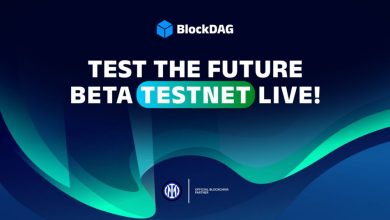Advancing Critical Infrastructure Security and Optimization through AI-Driven Predictive Analytics: A Practitioner's Perspective

In today’s interconnected world, the resilience of our critical infrastructure the lifeblood of modern society is paramount. From energy grids and transportation networks to healthcare facilities, these systems are increasingly complex and interdependent, making them prime targets for both physical and cyber threats. Addressing these evolving challenges demands innovative solutions, and Artificial Intelligence (AI)-driven predictive analytics has emerged as a transformative tool in bolstering proactive security and enhancing operational efficiency.
As a seasoned cybersecurity expert with years of experience in threat detection, incident response, and the implementation of AI-driven security solutions, I have witnessed first hand with the critical need for advanced approaches to safeguard these vital systems. Currently serving as a Security Operations Center (SOC) Analyst and Engagement Technician at Texas Southern University, my daily work involves navigating the complexities of modern cybersecurity and actively contributing to the enhancement of our institution’s security posture. This practical experience, coupled with my prior work as a cybersecurity analyst in Nigeria focusing on network and system security, provides a unique perspective on the global challenges and opportunities in this rapidly evolving field.
AI-driven predictive analytics leverages the power of machine learning and neural networks to analyze vast datasets in real-time. This capability allows for the identification and mitigation of potential threats before they escalate into critical incidents. For instance, sophisticated predictive models can analyze network traffic patterns to detect subtle anomalies indicative of sophisticated cyberattacks, enabling timely and targeted interventions by security teams. Furthermore, AI-driven analytics optimizes resource allocation by forecasting system demands, ensuring optimal performance and minimizing operational waste within critical infrastructure environments.

Nurudeen Yemi Hussain
Real-World Impact and My Contributions
The practical applications of AI-driven predictive analytics within critical infrastructure are far-reaching and directly impact the safety and efficiency of our communities. My experience has highlighted several key areas where this technology offers significant advancements:
Enhanced Threat Detection and Response: Through my work at Texas Southern University, I have observed the potential of AI systems to analyze data from diverse sources including network logs, security alerts, and system telemetry to identify subtle indicators of compromise that might be missed by traditional methods. This proactive approach significantly enhances the resilience against increasingly sophisticated cyber threats. My understanding of these technologies allows me to contribute to the development and implementation of more effective threat detection strategies.
Optimized Resource Allocation: Witnessing the operational demands of a large institution like Texas Southern University underscores the importance of efficient resource management. AI-driven analytics can forecast resource needs, ensuring that critical systems have the necessary capacity and availability, thus reducing waste and improving overall operational efficiency. My role involves understanding these operational needs and contributing to the security infrastructure that supports them.
Proactive Disaster Resilience: While my direct involvement in disaster prediction is not the primary focus, my understanding of the interconnectedness of systems highlights the potential of AI to analyze weather patterns and other environmental data to predict and mitigate the impacts of natural disasters on critical infrastructure. This proactive approach is crucial for ensuring continuity of essential services.
Predictive Maintenance for Enhanced Uptime: The ability of AI to analyze equipment health data and predict potential failures is crucial for minimizing downtime in critical systems. My experience in understanding system vulnerabilities informs my appreciation for the role of predictive maintenance in maintaining operational integrity.
Improved Supply Chain Security and Optimization: Recognizing the vulnerabilities within supply chains, AI can play a vital role in predicting demand fluctuations and potential disruptions, ensuring the continuous and secure delivery of essential services.
Addressing the Challenges and Fostering Innovation
While the benefits of AI-driven predictive analytics are clear, several challenges must be proactively addressed. Ensuring robust data privacy and security is paramount to protect against new vulnerabilities introduced by AI systems. Furthermore, establishing ethical guidelines and promoting transparency in AI systems is essential to maintain public trust and prevent biased outcomes.
Cross-sector collaboration is crucial for fostering innovation and developing standardized frameworks for AI deployment in critical infrastructure. Partnerships between governmental bodies, private sector organizations, and academic institutions are vital for sharing knowledge and resources. Moreover, investing in workforce development and providing opportunities for reskilling and upskilling the cybersecurity workforce will be essential as AI technologies continue to optimize processes.

Nurudeen Yemi Hussain
Conclusion: A Commitment to Advancing Security and Optimization
The integration of AI-driven predictive analytics represents a significant leap forward in addressing the multifaceted challenges facing our critical infrastructure. By enhancing both security and operational efficiency, these technologies contribute directly to the overall well-being and safety of our communities.
My experience as a SOC Analyst and Engagement Technician at Texas Southern University, combined with my prior cybersecurity work in Nigeria, provides me with a practical and global perspective on the implementation and impact of these technologies. I am actively involved in contributing to a more secure and resilient environment through my daily work and am committed to further advancing the application of AI in cybersecurity. As we move forward, prioritizing data integrity, ethical governance, and collaborative efforts will be essential to fully harnessing the transformative potential of AI while proactively addressing emerging concerns. My ongoing work and dedication in this field represent a continuous contribution to the security and optimization of critical infrastructure.
“In today’s cybersecurity landscape, critical infrastructure faces a barrage of sophisticated threats. Ransomware attacks continue to evolve with stronger encryption, while threat actors increasingly employ stealthy techniques like Living Off the Land to evade detection. Advanced Persistent Threats, often state-sponsored, pose a long-term risk to sensitive information and operational continuity. This complex threat environment underscores the critical role of dedicated Blue Teams in building robust defenses. However, the sheer volume and sophistication of these attacks highlight the need for more advanced, proactive solutions. This is where AI-driven predictive analytics becomes invaluable. By leveraging machine learning and neural networks, AI can augment the capabilities of Blue Teams in several key areas…





